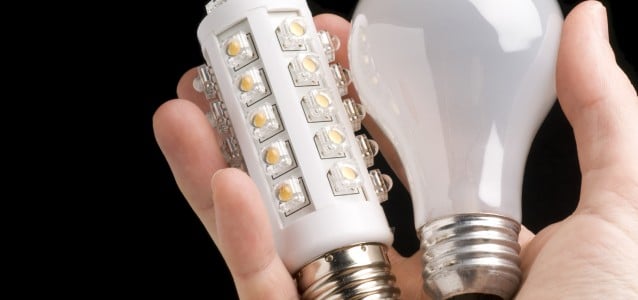LED Buyer's Checklist
10 Steps To Find The Right LED Supplier (As Featured in Lux Magazine)
LED Eco Lights’ co-founder, Saima Shafi, sets out the top 10 steps LED buyers should look out for when choosing a supplier of lamps and luminaires.
Choosing a supplier may not be so straightforward, especially when there are no formal performance standards to measure against. It is very easy to fall into the trap of purchasing based on grand claims rather than actual performance. Also, the variance in products and performance on offer is so wide that choosing the right product and the right supplier can be a minefield.
To help you decide what to look for in a reliable LED supplier, here is a 10 point buyer’s checklist based on background, quality, performance and price.

1. Be responsible:
Health and safety comes first. Make sure you use CE and RoHS-certified products only. Products which don’t comply with the regulations is against the law – products without a CE mark have not passed basic electrical hazards during installation and use. Ask to see certificates for due diligence and your supplier should be able to provide copies on request.
2. Check WEEE compliance:
Make sure that you use a supplier that complies with the regulations for waste electrical and electronic equipment (WEEE). If not, their products are illegal. WEEE regulations require electrical waste to be disposed of properly and safely. Your supplier should have its WEEE scheme membership to hand.
3. Do background checks:
Protect your investment and future proof your purchase. Conduct a background check on potential suppliers. A basic credit check and a look at their trading history will provide valuable information on financial standing and past performance. It can also be important if you need to make a warranty-based claim later on or if you are anticipating a long-term supply contract.
4. Seek references:
Ask for feedback from previous customers on performance and service. A good supplier will happily provide these to demonstrate their track record. Also, ask if you can try before you buy – a reputable company will allow you to trial products, either free of charge or on a sale-or-return basis. Remember to take lux readings before and after to ensure the product is fit for purpose.
5. Interrogate the data:
Do not rely on ‘grand claims’ – ask to see data on product performance so you can judge evidence of power consumption, light output and operating parameters, and ask to see the installation instructions.
6. Check build quality:
Make sure that the product is mechanically sound. If you can hear a rattle when you shake it, that’s usually not a good sign. Check that the body is robust and durable and, if relevant, check its IP rating. Also, enquire about stock availability – continuation of supply is essential and suppliers quoting long lead times should probably be avoided. Leading, reputable suppliers will hold sufficient stock to cater for their customers’ on-going and urgent needs.
7. Seek out real expertise:
How well does the supplier understand the new technology? Buy from an LED lighting specialist – a company that understands the challenges you face when lighting your premises and has experience of delivering LED installations of a similar style and size. There are many companies trying to jump on the LED bandwagon but, all too often, they have little understanding or experience of the technology.
8. Get it guaranteed:
Does your supplier offer a guarantee and, if so, how long is it? LED lighting products have long lives, so guarantees should reflect this. A confident manufacturer will guarantee its products for at least three years and should be able to support the warranty period with proof of live installations that have performed reliably for similar periods of time.
9. Know who you are dealing with:
Manufacturer’s develop and produce products and invest heavily in research and development. Their engineers work within the existing parameters of LED technology. Installers, on the hand, may not understand component configuration in detail, and elements that can alter performance often rely on specialised electronics.
10. OK, how much?
Finally, and only when you are satisfied with everything else, look at pricing: if products seem too cheap, there will be reasons. These could include poor quality components and substandard manufacturing techniques. Low-quality LEDs will cause problems such as inadequate light performance: poorly assembled products can pose serious installation and safety hazards. Other common problems include poor reliability – colour-shifting after use, rapid degradation of light output or high failure levels. Furthermore, these and others issues are frequently exacerbated by poor or non-existent after-sales support. You must be confident that, if there is a problem, your supplier will rectify it fast, effectively and efficiently. Beware of cheap, inferior products from unscrupulous suppliers. Remember, in common with all quality products, if the price you’re being quoted for LED lamps and luminaries seems to cheap to be true, ask yourself why. They will inevitably cost you more in the long run, once problems start appearing.
View the Goodlight range here
See our Installation Gallery here




